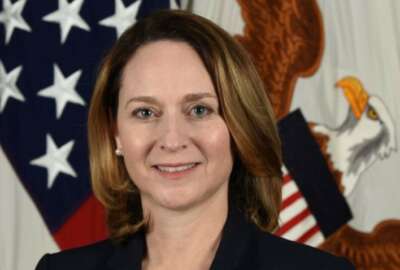DoD bringing back advisory groups, excited about innovation steering group potential
Deputy Defense Secretary Kathleen Hicks says 16 of the Pentagon’s advisory boards are now starting operations and being staffed again.
The Defense Department is making progress on reinstating the 42 advisory boards, which suspended operations at the beginning of the Biden administration.
Deputy Defense Secretary Kathleen Hicks says 16 of the Pentagon’s advisory boards are now starting operations and being staffed again. Hicks said during a speech at the Defense News Conference that she hopes all of the advisory boards that were put on hold will be up and running by the end of the year.
Defense Secretary Lloyd Austin put the boards on hold after the Trump administration tried to implant last minute politically divisive allies into the leadership of the groups.
Austin thought the boards deserved a complete overhaul, and fired everyone on the committees.
“There is no question that the frenetic activity that occurred to the composition of so many boards in just the period of November to January deeply concerned the secretary and certainly helped drive him to this decision,” Pentagon Spokesman John Kirby said in February. “This review will allow him now to quickly get his arms around the purpose of these boards and to make sure the advisory committees are in fact providing the best possible advice to department leadership.”
The boards that have approval to begin staffing include the:
- DoD Board of Actuaries
- Medicare-Eligible Board of Advisors
- Defense Advisory Committee on Investigation, Prosecution, and Defense of Sexual Assault in the Armed Forces
- Uniform Formulary Beneficiary Advisory Panel
- Inland Waterways Users Board
- DoD Wage Committee
- Board on Coastal Engineering Research
- Marine Corps University Board of Visitors
- Department of the Air Force Scientific Advisory Board
- Strategic Command Strategic Advisory Group
- Army Science Board
- Defense Advisory Committee on Women in the Services
DoD’s innovation experiment
While the Pentagon is replenishing its advisory boards, its task forces are still in full force. Partly at Congress’ bequest, the Pentagon is strengthening the role of the DoD chief technology officer – who is also the undersecretary for research and engineering.
The CTO is in charge of an innovation steering group, which Hicks said is revolutionary to DoD.
“We have not had anything comparable to this,” she said. “There has not been a focus research and development group across the whole department at that level. What we think we’ve really been able to do here is substantially empower that CTO. We really want to imbue that with concrete deliverables, and I think the innovation steering group is the mechanism by which we can do that.”
The group will be directly tied in with the Joint Requirements Oversight Council.
Hicks said one of the first deliverables from the group is the Rapid Defense Experimentation Reserve (RDER, pronounced Raider). That initiative is a unified innovation ecosystem that will connect the military services’ research experiments.
“They have already done some of that work on those reader proposals… those are coming forward to the Deputy’s Management Action Group,” Hicks said. “That will help us oversee that entire joint rapid experimentation processes.”
Another deliverable is mapping the innovation ecosystem of more than 40 organizations. The group has done that mapping.
“Now the task is to figure out how to build a degree of feedback loop here.” Hicks said. “The hope here is we are not trying to centralize or rush innovation or put it under a severe oversight, but it is to bring that feedback back into the system. We’re looking at perhaps some regionalized approaches that are joint in nature that hold all the innovation organizations together in a particular area.”
Copyright © 2025 Federal News Network. All rights reserved. This website is not intended for users located within the European Economic Area.
Scott Maucione is a defense reporter for Federal News Network and reports on human capital, workforce and the Defense Department at-large.
Follow @smaucioneWFED
Related Stories







